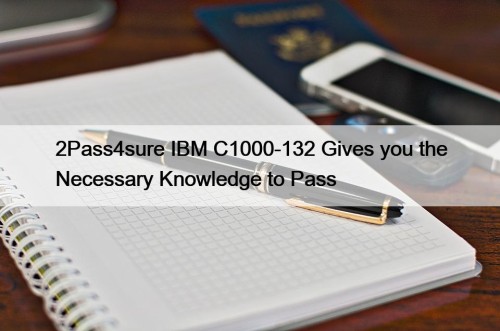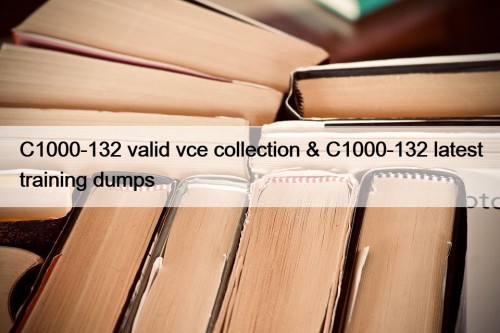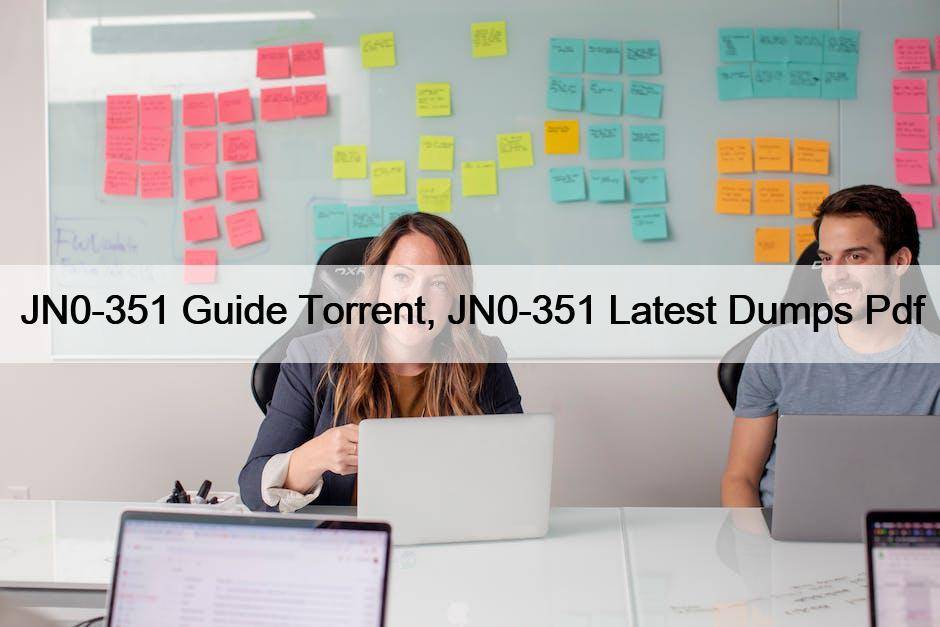Most Popular
 Pass Guaranteed Quiz 2025 CISA: Useful Reliable Certified Information Systems Auditor Test Cram
Pass Guaranteed Quiz 2025 CISA: Useful Reliable Certified Information Systems Auditor Test Cram
BONUS!!! Download part of DumpsTests CISA dumps for free: https://drive.google.com/open?id=1tZ4xPmwXufPbFVRAziFEvYb2kCpNbwrDWith ...
 2Pass4sure IBM C1000-132 Gives you the Necessary Knowledge to Pass
2Pass4sure IBM C1000-132 Gives you the Necessary Knowledge to Pass
P.S. Free 2025 IBM C1000-132 dumps are available on Google ...
 C1000-132 valid vce collection & C1000-132 latest training dumps
C1000-132 valid vce collection & C1000-132 latest training dumps
P.S. Free & New C1000-132 dumps are available on Google ...



JN0-351 Guide Torrent, JN0-351 Latest Dumps Pdf

What's more, part of that DumpExam JN0-351 dumps now are free: https://drive.google.com/open?id=1dqxTtBkBUuN-GHd5TLMS-Et-UAG--Yt_
So you do not need to worry about the JN0-351 exam preparation just download DumpExam JN0-351 latest dumps and start preparing today. The DumpExam is committed to ace the JN0-351 exam preparation and success journey successfully in a short time period. To achieve this objective the DumpExam is offering Juniper JN0-351 Practice Test questions with high-in-demand features.
If you hope to get a job with opportunity of promotion, it will be the best choice chance for you to choose the JN0-351 study question from our company. Because our JN0-351 study materials have the enough ability to help you improve yourself and make you more excellent than other people. The JN0-351 Learning Materials from our company have helped a lot of people get the certification and achieve their dreams. And you also have the opportunity to contact with the JN0-351 test guide from our company.
JN0-351 Latest Dumps Pdf - Latest JN0-351 Exam Registration
In fact, on one side, our JN0-351 training braidumps can help you pass the exam and win the certification. On the othe side, i think it is even more important, that you can apply what you have learned on our JN0-351 Practice Guide into practices. Your speed of finishing the task will be greatly elevated. Everting will take positive changes because of our JN0-351 exam materials. Please cheer up for yourself.
Juniper JN0-351 Exam Syllabus Topics:
| Topic | Details |
|---|---|
| Topic 1 |
|
| Topic 2 |
|
| Topic 3 |
|
| Topic 4 |
|
| Topic 5 |
|
Juniper Enterprise Routing and Switching, Specialist (JNCIS-ENT) Sample Questions (Q60-Q65):
NEW QUESTION # 60
Exhibit.
You want to enable redundancy for the EBGP peering between the two routers shown in the exhibit. Which three actions will you perform in this scenario? (Choose three.)
- A. Configure a cluster ID.
- B. Configure routes for the peer loopback interface IP addresses.
- C. Configure BGP multihop.
- D. Configure loopback interface peering.
- E. Configure an MD5 peer authentication.
Answer: B,C,D
Explanation:
A is correct because you need to configure BGP multihop to enable redundancy for the EBGP peering between the two routers. BGP multihop is a feature that allows BGP peers to establish a session over multiple hops, instead of requiring them to be directly connected1. By default, EBGP peers use a time-to-live (TTL) value of 1 for their packets, which means that they can only reach adjacent neighbors1. However, if you configure BGP multihop with a higher TTL value, you can allow EBGP peers to communicate over multiple routers in between1. This can provide redundancy in case of a link failure or a router failure between the EBGP peers.
B is correct because you need to configure loopback interface peering to enable redundancy for the EBGP peering between the two routers. Loopback interface peering is a technique that uses loopback interfaces as the source and destination addresses for BGP sessions, instead of physical interfaces2. Loopback interfaces are virtual interfaces that are always up andreachable as long as the router is operational2. By using loopback interface peering, you can avoid the dependency on a single physical interface or link for the BGP session, and use multiple paths to reach the loopback address of the peer2. This can provide redundancy and load balancing for the EBGP peering.
C is correct because you need to configure routes for the peer loopback interface IP addresses to enable redundancy for the EBGP peering between the two routers. Routes for the peer loopback interface IP addresses are necessary to ensure that the routers can reach each other's loopback addresses over multiple hops2. You can use static routes or dynamic routing protocols to advertise and learn the routes for the peer loopback interface IP addresses2. Without these routes, the routers will not be able to establish or maintain the BGP session using their loopback interfaces.
NEW QUESTION # 61
Exhibit
Which command displays the output shown in the exhibit?
- A. show ethernet-switching table extensive
- B. show route forwarding-table
- C. show ethernet-switching table
- D. show route forwarding-table family ethernet-switching
Answer: C
Explanation:
The output shown in the exhibit is a brief display of the Ethernet switching table, which shows the learned Layer 2 MAC addresses for each VLAN and interface1.
The command show ethernet-switching table displays the Ethernet switching table with brief information, such as the destination MAC address, the VLAN name, the forwarding state, and the interface name1.
The command show route forwarding-table displays the routing table information for each protocol family, such as inet, inet6, mpls, iso, and so on2. It does not show the Ethernet switching table or the MAC addresses.
The command show ethernet-switching table extensive displays the Ethernet switching table with extensive information, such as the destination MAC address, the VLAN name, the forwarding state, the interface name, the VLAN index, and the tag type1. It shows more details than the brief output shown in the exhibit.
The command show route forwarding-table family ethernet-switching displays the routing table information for the ethernet-switching protocol family, whichshows the destination MAC address, the next-hop MAC address, and the interface name3. It does not show the VLAN name or the forwarding state.
NEW QUESTION # 62
Which two mechanisms are part of building and maintaining a Layer 2 bridge table? (Choose two.)
- A. blocking
- B. listening
- C. learning
- D. flooding
Answer: C,D
Explanation:
Option B is correct. Flooding is a mechanism used in Layer 2 bridging where the switch sends incoming packets to all its ports except for the port where the packet originated1. This is done when the switch doesn't know the destination MAC address or when the packet is a broadcast or multicast1.
Option C is correct. Learning is another mechanism used in Layer 2 bridging where the switch learns the source MAC addresses of incoming packets and associates them with the port on which they were received23. This information is stored in a MAC address table, also known as a bridge table23.
Option A is incorrect. Blocking is a state in Spanning Tree Protocol (STP) used to prevent loops in a network2. It's not a mechanism used in building and maintaining a Layer 2 bridge table2.
Option D is incorrect. Listening is also a state in Spanning Tree Protocol (STP) where the switch listens for BPDUs to make sure no loops occur in the network before transitioning to the learning state2. It's not a mechanism used in building and maintaining a Layer 2 bridge table2.
NEW QUESTION # 63
Which statement is correct about graceful Routing Engine switchover (GRES)?
- A. The PFE restarts and the kernel and interface information is lost.
- B. GRES has a helper mode and a restarting mode.
- C. When combined with NSR, routing is preserved and the new master RE does not restart rpd.
- D. With no other high availability features enabled, routing is preserved and the new master RE does not restart rpd.
Answer: C
Explanation:
Explanation
The Graceful Routing Engine Switchover (GRES) feature in Junos OS enables a router with redundant Routing Engines to continue forwarding packets, even if one Routing Engine fails1. GRES preserves interface and kernel information, ensuring that traffic is not interrupted1. However, GRES does not preserve the control plane1.
To preserve routing during a switchover, GRES must be combined with either Graceful Restart protocol extensions or Nonstop Active Routing (NSR)1. When GRES is combined with NSR, nearly 75 percent of line rate worth of traffic per Packet Forwarding Engine remains uninterrupted during GRES1. Any updates to the primary Routing Engine are replicated to the backup Routing Engine as soon as they occur1.
Therefore, when GRES is combined with NSR, routing is preserved and the new master RE does not restart rpd1.
NEW QUESTION # 64
Which statement is correct about controlling the routes installed by a RIB group?
- A. An import policy is applied to the RIB group.
- B. Only routes in the last table are installed.
- C. A firewall filter must be configured to install routes in the RIB groups.
- D. An export policy is applied to the RIB group.
Answer: A
Explanation:
Explanation
A RIB group is a configuration that allows a routing protocol to install routes into multiple routing tables in Junos OS. A RIB group consists of an import-rib statement,which specifies the source routing table, and an export-rib statement, which specifies the destination routing table or group. A RIB group can also include an import-policy statement, which specifies one or more policies to control which routes are imported into the destination routing table or group1.
An import policy is a policy statement that defines the criteria for accepting or rejecting routes from the source routing table. An import policy can also modify the attributes of the imported routes, such as preference, metric, or community. An import policy can be applied to a RIB group by using the import-policy statement under the [edit routing-options rib-groups] hierarchy level1.
Therefore, option A is correct, because an import policy is applied to the RIB group to control which routes are installed in the destination routing table or group. Option B is incorrect, because all routes in the source routing table are imported into the destination routing table or group, unless filtered by an import policy.
Option C is incorrect, because a firewall filter is not used to install routes in the RIB groups; a firewall filter is used to filter packets based on various criteria. Option D is incorrect, because an export policy is not applied to the RIB group; an export policy is applied to a routing protocol to control which routes are advertised to other devices.
References:
1: rib-groups | Junos OS | Juniper Networks
NEW QUESTION # 65
......
Our Enterprise Routing and Switching, Specialist (JNCIS-ENT) test torrent boost 99% passing rate and high hit rate so you can have a high probability to pass the exam. Our JN0-351 study torrent is compiled by experts and approved by the experienced professionals and the questions and answers are chosen elaborately according to the syllabus and the latest development conditions in the theory and the practice and based on the real exam. If you buy our Enterprise Routing and Switching, Specialist (JNCIS-ENT) test torrent you only need 1-2 hours to learn and prepare the exam and focus your main attention on your most important thing.
JN0-351 Latest Dumps Pdf: https://www.dumpexam.com/JN0-351-valid-torrent.html
- Get 100% Passing Success With True JN0-351 Exam 🧔 Copy URL ▶ www.prep4pass.com ◀ open and search for ➡ JN0-351 ️⬅️ to download for free 🌹JN0-351 Exam Cram Review
- 2025 Excellent JN0-351 Guide Torrent Help You Pass JN0-351 Easily ➿ Search for ▶ JN0-351 ◀ and download exam materials for free through ⮆ www.pdfvce.com ⮄ ⛳Interactive JN0-351 Course
- Latest JN0-351 Test Preparation 🦉 Exam JN0-351 Revision Plan 🐴 Exam JN0-351 Study Solutions 🪀 Immediately open ( www.testsimulate.com ) and search for ✔ JN0-351 ️✔️ to obtain a free download 🍿Relevant JN0-351 Questions
- Exam JN0-351 Revision Plan 🔺 Exam Sample JN0-351 Questions 👿 Exam JN0-351 Revision Plan ☮ Search on [ www.pdfvce.com ] for ⇛ JN0-351 ⇚ to obtain exam materials for free download 🟥JN0-351 Best Practice
- 2025 Excellent JN0-351 Guide Torrent Help You Pass JN0-351 Easily 🧣 ▶ www.passcollection.com ◀ is best website to obtain { JN0-351 } for free download 🔉JN0-351 Exam Review
- 2025 Excellent JN0-351 Guide Torrent Help You Pass JN0-351 Easily 🧙 Open ▷ www.pdfvce.com ◁ enter { JN0-351 } and obtain a free download 🦂Valid JN0-351 Exam Cram
- Relevant JN0-351 Questions 🐐 Exam JN0-351 Revision Plan 🐻 Relevant JN0-351 Questions 🎰 Search for ▛ JN0-351 ▟ on ➤ www.itcerttest.com ⮘ immediately to obtain a free download ☝JN0-351 Authentic Exam Questions
- Relevant JN0-351 Questions 📣 Exam JN0-351 Revision Plan 🤥 JN0-351 Reliable Exam Dumps 🛥 Simply search for 「 JN0-351 」 for free download on ▛ www.pdfvce.com ▟ 😋JN0-351 Best Study Material
- JN0-351 Exam Cram Review 🚮 Downloadable JN0-351 PDF 🎨 Test JN0-351 Price 🔒 Download { JN0-351 } for free by simply entering ☀ www.itcerttest.com ️☀️ website 🪓Test JN0-351 Price
- 100% Pass 2025 Trustable Juniper JN0-351: Enterprise Routing and Switching, Specialist (JNCIS-ENT) Guide Torrent 📯 Go to website ( www.pdfvce.com ) open and search for ▛ JN0-351 ▟ to download for free 🎌Exam JN0-351 Assessment
- 2025 Excellent JN0-351 Guide Torrent Help You Pass JN0-351 Easily 🥦 Search for 《 JN0-351 》 and obtain a free download on “ www.torrentvalid.com ” 💲Test JN0-351 Price
- JN0-351 Exam Questions
- 252digital.net nomal.org whvpbanks.ca ava.netmd.org olasir.com godata.co.in 金銀天堂.官網.com watch.hyperwatching.com www.peiyuege.com www.lms001.ramimrahman.com
BONUS!!! Download part of DumpExam JN0-351 dumps for free: https://drive.google.com/open?id=1dqxTtBkBUuN-GHd5TLMS-Et-UAG--Yt_
Tags: JN0-351 Guide Torrent, JN0-351 Latest Dumps Pdf, Latest JN0-351 Exam Registration, JN0-351 Download Demo, Exam JN0-351 Braindumps